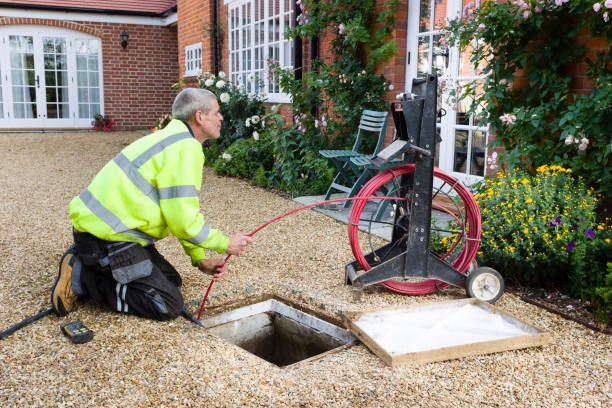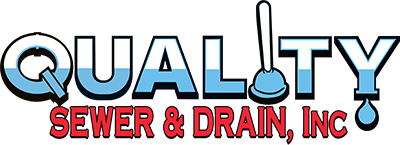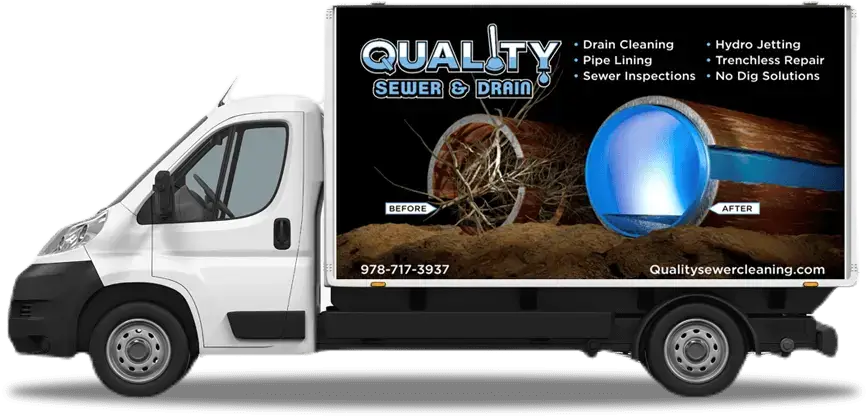
Have you ever wondered what really goes on inside your home’s plumbing system? When drains clog, water backs up, or strange odors linger, the culprit is often hidden deep in your sewer lines. That’s where a video drain inspection process becomes essential. This advanced, non-invasive method allows professionals at Quality Sewer Cleaning to visually assess underground pipes, pinpoint problems, and recommend targeted solutions—all without tearing up your yard. We’ll walk you through what to expect during a sewer camera inspection, the most common issues it uncovers (like tree root intrusion and pipe damage assessment), and why sewer line diagnostics are one of the smartest investments a homeowner can make.
What Is a Video Drain Inspection?
A video drain inspection process uses high‑resolution, waterproof CCTV cameras to peer inside your sewer and drain lines, capturing real-time footage. This non-invasive technique lets our technicians pinpoint issues—blockages, cracks, root intrusions—without digging.
Why Sewer Line Diagnostics Matter?
Accurate sewer line diagnostics are crucial—not only do they uncover hidden problems, but they also guide targeted, cost-effective repairs. Video inspections eliminate guesswork, saving you time, money, and disruption.
When You Should Schedule an Inspection
Schedule an inspection if you’re experiencing:
- Frequent backups or slow drains
- Foul odors from drains or yard
- Purchasing a new home
- Older pipes prone to corrosion or tree-root intrusion
Step-by-Step Video Drain Inspection Process
Initial Consultation and Service Setup
At Quality Sewer Cleaning, your journey begins with a call to schedule. Technicians conduct a thorough consultation—reviewing symptoms, history, and system layout—then prepare for the inspection.
Equipment Used in a Video Drain Inspection
We deploy CCTV drain cameras, featuring waterproof lenses, LED lighting, and long, flexible cables compatible with various pipe sizes up to several hundred feet long.
How the Sewer Camera Navigates the Pipes?
The camera is inserted via a cleanout or access point. In larger pipes, a motorized “tractor” pushes the camera forward. In narrow lines, a rigid cable is pulled through. Operators monitor and direct the camera from a service truck.
Identifying Blockages and Tree Root Intrusion
As the camera moves, technicians look for:
- Blockages and buildups, such as grease, debris, and sediment
- Tree root intrusion, where roots penetrate joints and grow inside pipes.
Pipe Damage Assessment and Visual Evidence Collection
The inspection captures all video footage, which is saved and reviewed. Technicians assess:
- Cracks, fractures, or corrosion
- Collapsed, offset, or bellied pipe sections
- Structural damage or foreign objects.
Key Benefits of Sewer Camera Inspections
Accurate Problem Detection
Seeing is believing. A video drain inspection reveals problems in real-time, letting technicians accurately classify and locate issues—no guesswork required.
Prevention of Larger Issues
By spotting small cracks, early corrosion, or minor root encroachment, proactive repairs can prevent devastating pipe failures, sewage backups, or collapse.
Saving Time and Reducing Repair Costs
Because the issue and its location are clear, unnecessary excavation is avoided. Repairs (like trenchless lining) are precise, minimizing cost and property disturbance.
Common Issues Found During Inspections
Blockages and Buildups
Grease, sludge, foreign objects, or sediment can clog your pipes. Video inspection identifies their type and location, ideal for targeted cleaning like hydro‑jetting.
Tree Root Intrusion in Sewer Lines
Tree roots exploit joints and cracks, gradually infiltrating pipes. Video footage shows root density and damage extent, guiding removal and preventative lining measures.
Cracked or Collapsed Pipes
Soil shifts or corrosion may crack or collapse pipes. Video evidence highlights structural damage and informs us whether spot repairs, pipe lining, or replacement are necessary.
Old or Corroded Sewer Lines
Older cast iron or clay pipes often corrode or crack over time. Camera inspections help assess pipe condition and determine if trenchless rehabilitation is needed for a seamless restoration.
Inspection Costs and Value
What Affects the Cost of a Sewer Camera Inspection
Several factors influence cost:
- Pipe length and diameter
- Accessibility of cleanouts
- Additional services (e.g. hydro-jetting or mapping)
- Severity of issues uncovered
Value Compared to Traditional Diagnostic Methods
Though a video inspection cost depends on the region and project complexity, the clarity and prevention it provides can save thousands in excavation, unnecessary repairs, and long-term maintenance.
Choosing the Right Service Provider
Why Trust Quality Sewer & Drain?
At Quality Sewer & Drain brings over 20 years of combined experience, NASSCO membership, and professional certifications (Picote, Trelleborg, Hammerhead). We’re committed to fair pricing, transparent communication, and high-quality work
Professionalism, Accuracy, and Transparency
Our skilled technicians perform each video inspection with care—providing real-time guidance, full video footage, and honest, knowledgeable reporting. We help you understand the benefits of sewer camera inspections and build trust through documentation.
FAQs About the Video Drain Inspection Process
Is it safe for all types of plumbing systems?
Yes. CCTV cameras are non-invasive and safe for cast iron, PVC, clay, and other standard piping materials.
What should I do with the video footage?
Keep it as a reference for future comparisons and repairs. We’ll also provide timestamps and notes to explain findings and areas of concern.
How often should I get my sewer line inspected?
We recommend inspections every 2–5 years. If your home is older, has large trees in the yard, or has recurring plumbing issues, consider annual inspections.
Can a video drain inspection detect tree root intrusion?
Yes, one of the most common issues a video drain inspection can identify is tree root intrusion. The high-definition cameras can pinpoint where roots have infiltrated the pipes, causing blockages or potential damage, and help develop a strategy for removal or repair.
How do I know if I need a video drain inspection?
You should consider scheduling a video drain inspection if you're experiencing frequent backups, slow drainage, foul smells, or if your home has older plumbing or large trees nearby that might affect your sewer lines. If you're buying a new home, it's also wise to inspect the sewer system before making the purchase.
How deep can the camera reach during a video drain inspection?
Our sewer cameras can typically reach depths of up to several hundred feet, depending on the layout of your plumbing system. This makes it an ideal tool for inspecting long or deep pipes that are otherwise inaccessible.
Will the video drain inspection damage my pipes?
No, the video drain inspection is entirely non-invasive and does not cause any damage to your pipes. The camera is gently pushed through your pipes without any pressure or scraping, ensuring the integrity of your plumbing system remains intact.
Can a video drain inspection help prevent future plumbing issues?
Yes! By identifying problems early, like cracks, root intrusions, or blockages, you can take corrective action before they become major issues, saving you from expensive repairs and potential property damage down the line.
Conclusion: Taking the First Step Toward a Healthy Sewer Line
A proactive video drain inspection process helps detect problems before they escalate—reducing repair costs, avoiding backups, and extending pipe life.
Don’t wait for disaster—when you need precision, documentation, and peace of mind, rely on us. Visit our website Quality Sewer & Drain for detailed service info and schedule your appointment today.

